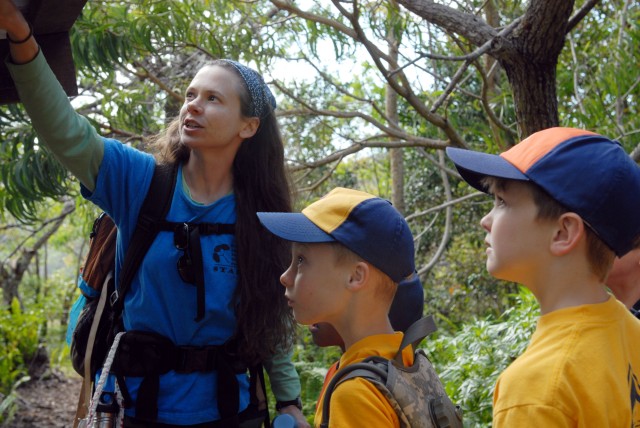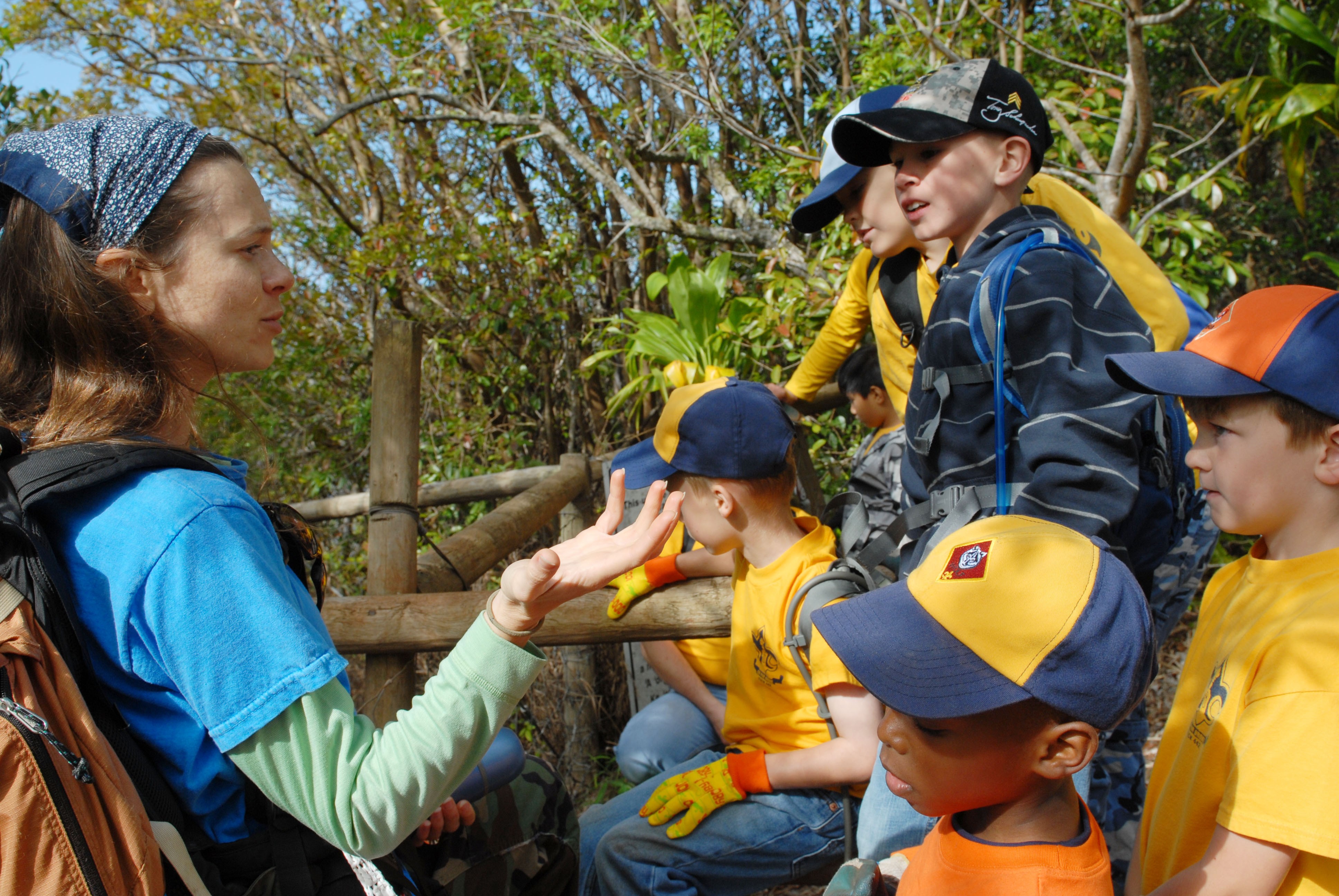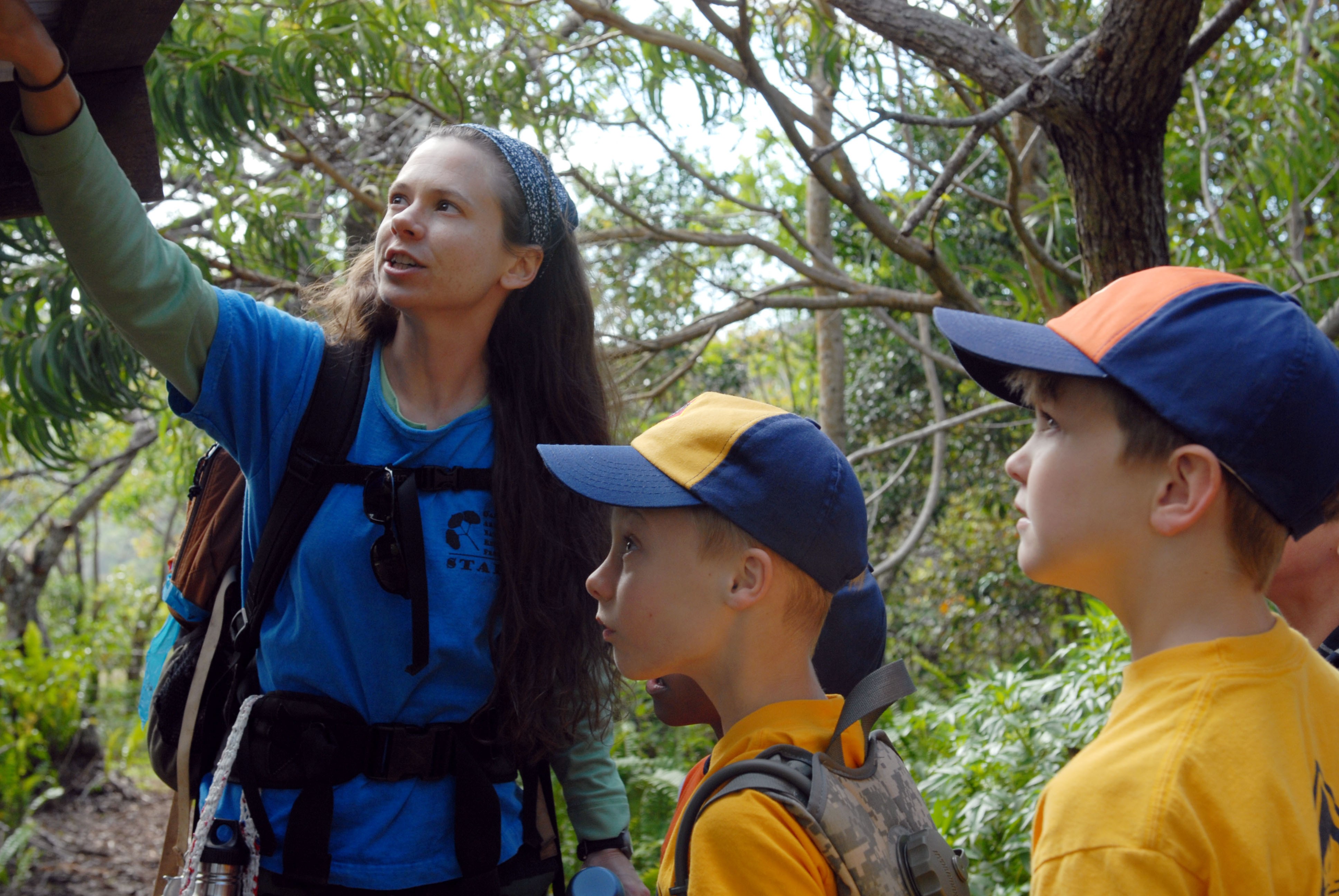WAIANAE, Hawaii - With boundless energy and inquisitive minds, Cub Scouts from Pack 442 recently helped the Army restore a native forest environment high in the Waianae Mountains as part of an outdoor conservation project.
Restoring the native Koa forest in the mountain ecosystem is an ongoing effort spearheaded by the Oahu Army Natural Resource Program (OANRP). Decades of unwanted growth and human interaction have taken a toll on the fragile systems here.
For their project, the Scouts, ages 7-12, teamed up with Candace Russo, environmental outreach specialist, and her team, to remove invasive strawberry guava trees in the Kahanahaiki area and make room for new native Koa seedlings.
Dan Adamski, natural resource management technician, assisted by teaching the Scouts the difference between native and invasive species. He explained, the restoration of the native habitat is extremely important.
"Healthy native habitats perform valuable functions. For example, a healthy forest provides clean drinking water. Restoring the diversity found in native habitat maintains its health and function," said Russo.
In the forest, Russo pointed out many endangered species the Army has been repopulating in areas where they used to be common. Of particular interest to the boys were the Kahuli tree snails.
A Kahuli snail lives its entire life in a single tree and is threatened by non-native predators, such as rats and the rosy wolf snail, a cannibalistic predator.
The Scouts learned how their actions could help or harm snails and the importance of making good choices.
It's important to instill a sense of stewardship for the land in children and an understanding of the relationship between humans and the environment, to help them make better decisions in the future, said Russo.
Impressed with the Scouts' efforts, she explained why volunteer groups, like the Cub Scouts, are essential to building bonds in the community.
"Support from community volunteers is invaluable because not only do we accomplish a lot of work ... but it also allows us to share information about the importance of Oahu's natural resources and the Army's dedication to protecting them," she said.
At the end of the trail, the Scouts took a moment to rest and take in the view of the Makua Valley, stretched out below. Many of the boys had never experienced such sights and sounds in a protected forest.
Russo hoped she left a lasting impression on the boys.
"I hope they leave remembering a positive experience, giving back to the forest. You just can't build a land ethic or create lasting memories of the beauty and importance of our natural environment by playing a video game," she said.
"The boys learned a lot, did some really hard work pulling up the unwanted seedlings, and had fun doing it all," said John Poppe, Bear Scout den leader.
The Scouts left the forest tired and sweaty. Many dozed off in cool cars as their parents drove home, but the smiles on their faces told the joys they had learning and protecting one small piece of Oahu.






Social Sharing